Some charter captains spend their whole career only fishing for tarpon. People do this because fishing for tarpon is both challenging and exciting. Tarpon are found in both the Atlantic Ocean and the Gulf of Mexico. Most tarpon travel south of the United States during the winter months. Some tarpon remain in the US year-round. The tarpon that stay typically live in the Gulf of Mexico and are juvenile tarpon under 40 inches long.
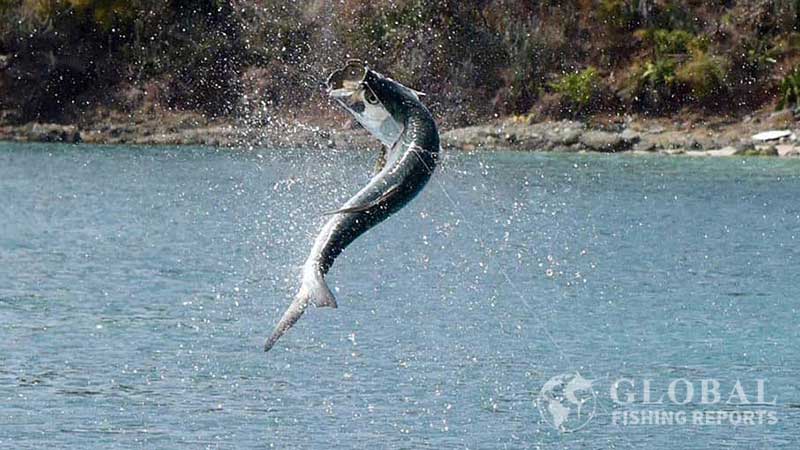
Tarpon also remain in some Florida marinas year-round because the fish are well-fed by people at bait cleaning stations. This means that just because you see tarpon in Florida does not mean that it is tarpon season. Tarpon season starts in early April and goes through the summer into late September.
In the Florida Keys, I typically go to the Seven Mile Bridge or the Bahia Honda Bridge and look to see if tarpon has started stacking up at the bridge pilings early in the season. If mullet start to fill up the flats, that is also a sign that it is tarpon season. The springtime is pre-spawn for tarpon and these fish follow the mullet to feed on them. This makes fresh mullet the best bait in the springtime. Late summer tarpon regularly feed on crabs and that becomes a great bait to use. When fishing for tarpon it is also common to hook sharks and barracuda.
I have fished for tarpon at Boca Grande Pass and in the Florida Keys which are both world-class tarpon fishing locations. I hooked about 20 tarpon before I landed a fish. The trick to landing a tarpon is to use the right hooks and give the tarpon slack when it jumps. This is called bowing to the tarpon. This is the only fish in the world that you are supposed to give slack to when it jumps. If you do not the tarpon typically throws the hook on the first jump. The better fisherman you are the more difficult it is to remember to give the fish slack. This is because you are trained to never give a fish slack.
I have had many people hook tarpon on charters and 9 times out of 10 they do not give the fish slack and it throws the hook right away. It is still super exciting to see them jump. With some practice, you get the feel for how tarpon run before they jump. Usually, the tarpon runs fast before a jump so the angler has a tendency to want to pull back hard, which is the opposite of what you should be doing.
Hopefully, this article will help you catch a tarpon on your next fishing trip!
Methods to Catch Tarpon
Dead Bait: Mullet with a Circle Hook
When I started fishing for tarpon I would use small patch crabs and would drift them right in front of tarpon and they would not seem interested. I was told live mullet is the way to go so I switched to that and had better luck, especially at dusk but at times tarpon would still not bite. Then I learned that although tarpon are huge and powerful creatures they are generally lazy scavenger feeders and dead bait not only works but works great!
This was fantastic news because keeping the mullet alive while shore fishing was lots of work. I found that fresh dead mullet typically outfishes live mullet, crabs, and lures. The tarpon bite is definitely better at dust, dawn, and at night. The trick to getting tarpon to bite during the day is having the tarpon naturally find the bait on their own. This takes patience but if a tarpon finds a good bait it will typically bite. If you bring the bait to the tarpon it will typically show no interest or even be spooked by the bait. Tarpon are not used to having small minnows swimming at them.
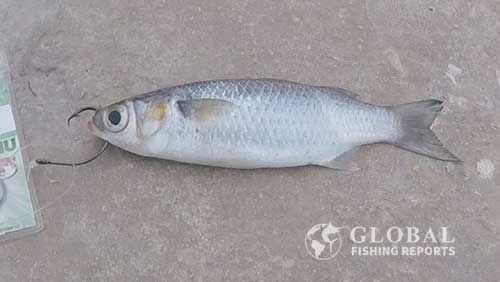
The best bait for tarpon is a dead mullet with a circle hook placed in the front of the fish. The tail should be cut off and the fish filleted a few inches back on each side starting at the back of the fish. Cutting the fish this way releases more scent into the water. If you do not have lots of bait you can cut the mullet into sections. The only real problem with using mullet is that barracuda and sharks like to eat dead mullet as well.
VMC Circle Hooks for Tarpon Bait
VMC size 9/0 circle hooks are ideal for tarpon fishing with mullet. If using smaller tarpon bait such as pilchards or cut bait size 5/0 circle hooks a good option because they are less noticeable to the tarpon. Tarpon have a very hard upper lip. Wide hooks have a difficult time going through the lip for a good hook set. This VMC circle hook is a fine wire hook that is still very strong. It is a circle hook so the angler should not set the hook.
If you feel a bite or see a tarpon take the bait just close the bail on the reel and start reeling until the line gets tight. Do not jerk the hook. The tarpon will typically start peeling drag a likely jump within the first 20 seconds. Get ready to give the fish slack every time it jumps. The drag does not need to be super heavy. The fish will tire itself out within 5-10 minutes. Then the drag can be increased to get the fish to the boat.
In Florida, it is against the law to remove a tarpon that is over 40 inches from the water. Just take some pictures by the boat and let it go. For smaller tarpon do not let the fish hit the ground. Lift the fish directly out of the water take a quick picture with the fish out of the water for less than 15 seconds. Tarpon fight until they exhausted so they do not survive long out of the water.
Foam Tarpon Float
Lightweight slotted foam bobbers are good floats for live and dead bait. Dead bait is suspended in the water using the float. This helps target the exact depths tarpon are at. In shallow water, the float helps keep the bait off the bottom which makes it easier for the tarpon to find the bait.
Using a float does make it more likey the tarpon with throw the hook when jumping. If it is a light foam float the tarpon can typically be landed. If it is a heavy weighted float the tarpon will typically throw the hook and get away. Sometimes when fishing from bridges I do not want to land the tarpon. In that case, I use a weighted float and a thick j-hook. I still get to hook a fish fight is for a minute and watch it jump once. That is the fun part anyway and you do not have to deal with releasing the fish. Other times you want the challenge of landing a fish but you need to make sure the surroundings will allow for that.
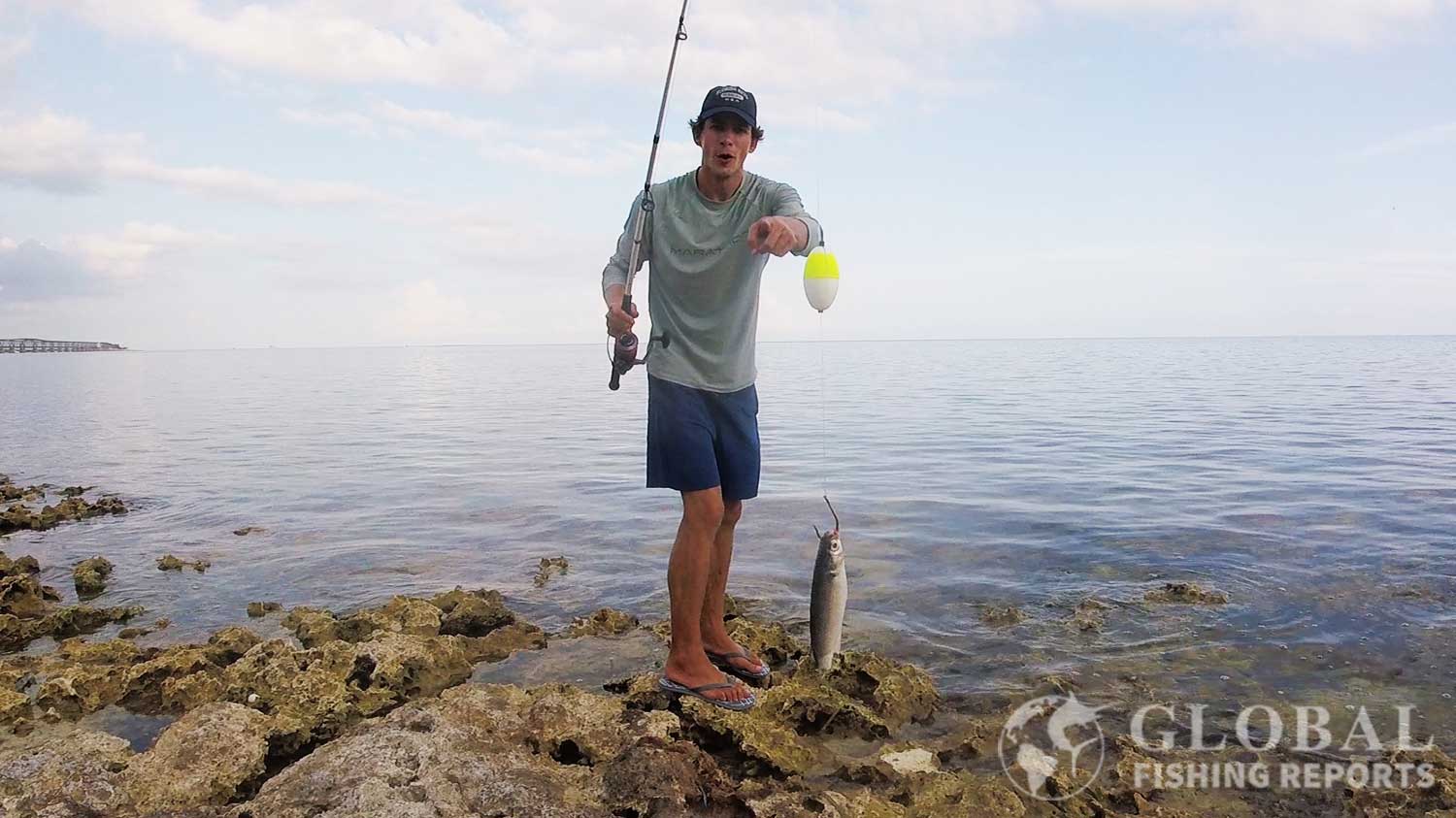
In the picture above I am fishing for tarpon using a float and a dead mullet which is butterflied to help release more scent. The hook is a j-hook but a circle hook would be a better option. The float was weighted and it should have not been weighted. I hooked several tarpon that day but the tarpon through the hook likely because of the float weight and j-hook.
Fluorocarbon Leader Line
Seaguar blue label 50-80 pound fluorocarbon leader. The mouth of tarpon is rough like sandpaper. The line near the hook gets chafed so using a fluorocarbon leader helps because it is abrasion-resistant. Tarpon have good eyesight so the clear leader helps to get more bites as well. If the tarpon are being spooked by baits I will even use a 40-pound leader line. If I know the fish is going to bite I will use a 50-80 pound leader line with a 30-pound monofilament mainline. Re-tie the hook after fighting each fish. Most of the time the leader line gets damaged during the fight.
Anglers also have a tendency to reel when they are not gaining line. This twists the line on a spinning reel and the line will need to be re-spooled. After every charter, I typically have one or two reels to re-spool. I think that it is better to let the angler enjoy the fight than to yell at them for reeling too much. Also, I want to land the fish and this ensures the line stays tight.
Live Bait Fishing for Tarpon
The most common live baits for tarpon are mullet, pilchards, and crabs. Fishing these on a large thin circle hook is a great way to catch tarpon. Tarpon are lazy scavenge feeders and these baits work well as dead baits if given the proper presentation. When using live bait, I typically use:
- A VMC size 9/0 circle hook for larger baits like mullet
- A size 5/0 circle hook for smaller baits like pilchards or crabs
- 50-80 pound fluorocarbon leader material to resist abrasion from the tarpon’s rough mouth
- A 30-pound monofilament mainline
- A lightweight foam float to suspend bait at the right depth
When I’m using live mullet, I hook them through the lips so they can swim around for a long time. The splashing and fluttering helps get the attention of tarpon. Usually, right at dusk, tarpon start feeding on mullet near the surface and you can put your bait right in the middle of the action.
For pilchards, I hook them through the nostrils where there’s a hard membrane that keeps the bait on the hook without injuring the fish much. In areas with large schools of pilchards, they make awesome tarpon bait.
With live crabs, I use a short leader (1-3 feet) in shallow water without current, and a longer leader (about 15 feet) when fishing near deep bridge pilings with strong current.
Live Bait: Mullet
I have caught tarpon using all kinds of bait. The bait people always recommended to me was live mullet or crabs. As I mentioned earlier mullet is considered the best bait pre-spawn in April and May. Come July crabs are considered the best bait. In reality, it depends on the day, some days everyone is catching them on crabs and other days only mullet.
Live mullet is definitely one of the best baits to have but it is also the most difficult to keep alive when fishing from shore. Five mullet only survive in a five-gallon bucket for about 30 minutes. So you end up spending more time catching bait than you do fishing. When I am tarpon fishing I try to note areas where tarpon swim based on the tide level. If you can naturally put a live bait in front of a tarpon that is passing by chances are it will take the bait. A dead mullet hooked in the head with the tail cut off and butterflied back is almost as effective as a live mullet. So do not worry too much if you can not keep the mullet alive.
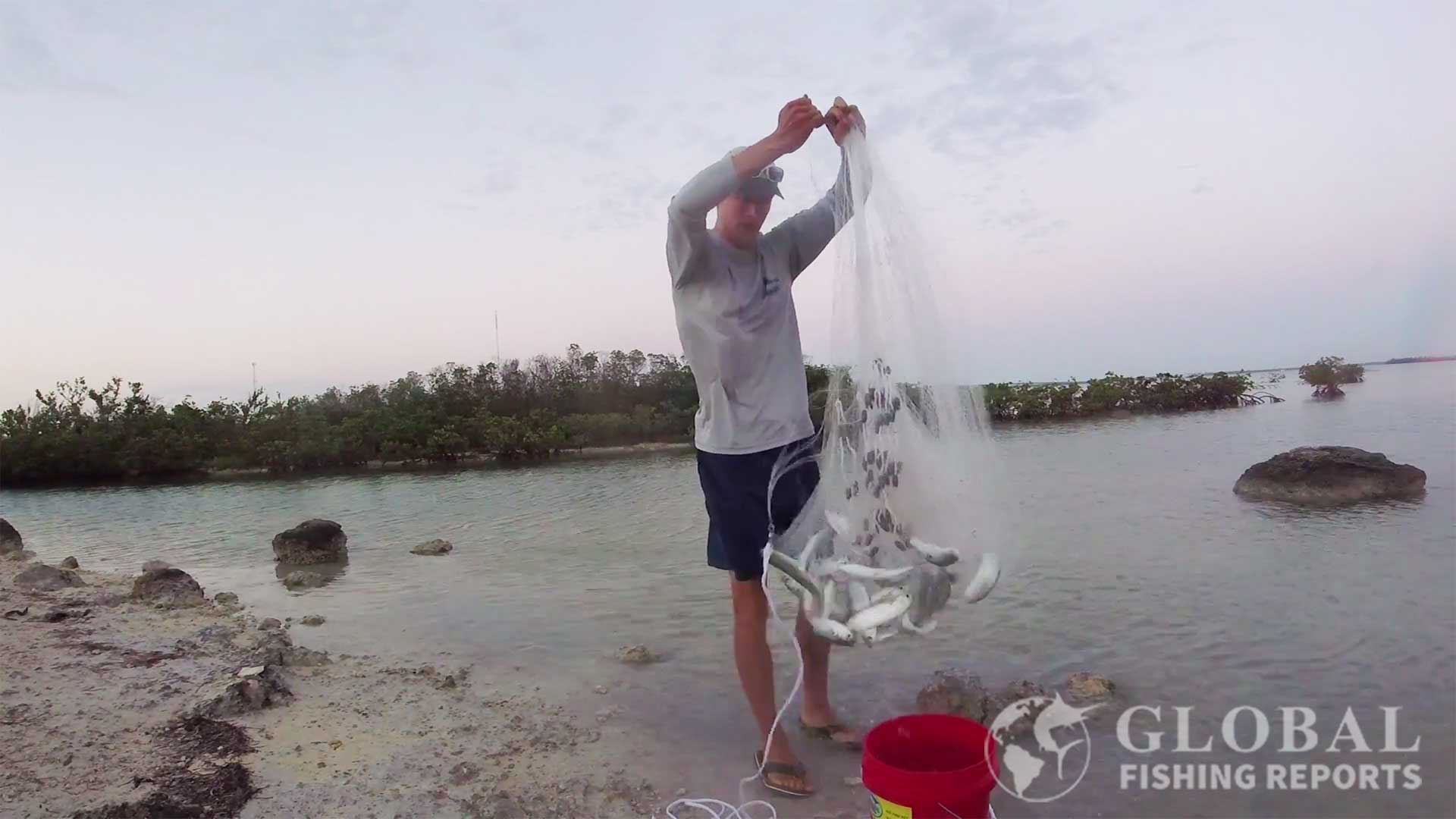
Fresh live mullet can be caught with a cast net. On certain days fresh live bait works better than fishing with dead bait. It can also attract other fish like barracuda and sharks which is not what you want to bite when fluorocarbon leaders are being used.
VMC Circle Hook for Tarpon Bait
VMC circle hook size 9/0 for big live baits like a mullet and size 5/0 for smaller baits like pilchards. If a mullet is hooked through the lips it will swim around for a long time. I like to put the mullet on a foam float so that it stays near the surface and the splashing and fluttering around helps get the attention of the tarpon. Usually, right at dusk, tarpon start feeding on mullet near the surface and you can put the exact same bait right in the middle of the action.
Visit the cast net page to find the best net to use to catch tarpon bait. The video below shows how to catch mullet with a small cast net.
Live Bait: Pilchards

In areas where there are large schools for pilchards, they make awesome tarpon bait. When running fishing charters hundreds of pilchards are usually leftover. When I let them go the tarpon usually goes crazy and they try to eat as many pilchards as they can. Any dead ones that get thrown in get eaten right away. For this reason, it is one of my favorite tarpon baits. Tarpon are pretty smart though and know when they are getting a free meal and when you are trying to catch them.
If I fish with pilchards I try and get the tarpon in a feeding frenzy and then trow a bit in the mix. It is pretty much a sure thing to get one hookup. After a tarpon is hooked it will shut off the bite in that area for about one hour. I always ask people if they know why fish are so smart? Cause they stay in schools, of course. Pilchards work a little bit better if they are alive buy dead bait works as well. Especially if you are chumming lots of dead bait. The other bait in the photo above is a scaled sardine which is very similar to a pilchard. The sardines have lots of scales that get everywhere so people often call them scalies.
VMC Circle Hooks
VMC circle hook size 5/0 is best for smaller bait like a pilchard. Hook a live pilchard through the nostrils in the nose. There is a hard membrane there which keeps that bait on the hook without injuring the fish much. If it is a dead bait try to hide the hook within the bait. Tarpon have good eyesight and are leader shy so definitely use fluorocarbon leader material.
Visit the cast nets page to learn how to throw a cast net and find the best net to use to catch tarpon bait like pilchards and mullet. In the video below I show the best way to throw any size cast net.
Live Bait: Crabs
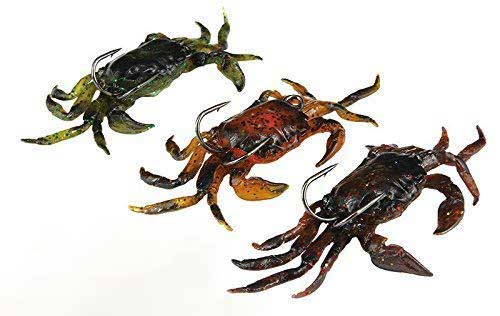
Using live crabs is one of the most popular baits for tarpon. When you are fishing in a strong current you will frequently see small patch crabs drifting by. When you see lots of these crabs it is a good time to use them as bait as well. If you have a small net you can scoop them out of the water and put them straight onto a hook.
The live crabs should be put about 15 feet off the bobber when fishing near deep bridge pilings with a strong current. A short leader 1 to 3 foot in length should be used in shallow water without current. A four-foot fluorocarbon leader with a 50-pound test should be used for an average size tarpon.
Gulp Grab for Tarpon Bait
Getting live crabs typically involves a trip to a tackle shop. A good alternative to live crabs is gulp peeler crabs. They are soft and allow for a good hookset. Place a 5/0 VMC circle hook through the crab with the tip coming out of the top of the bait near the claws. It can also be hooked through the side like a live crab would be hooked.
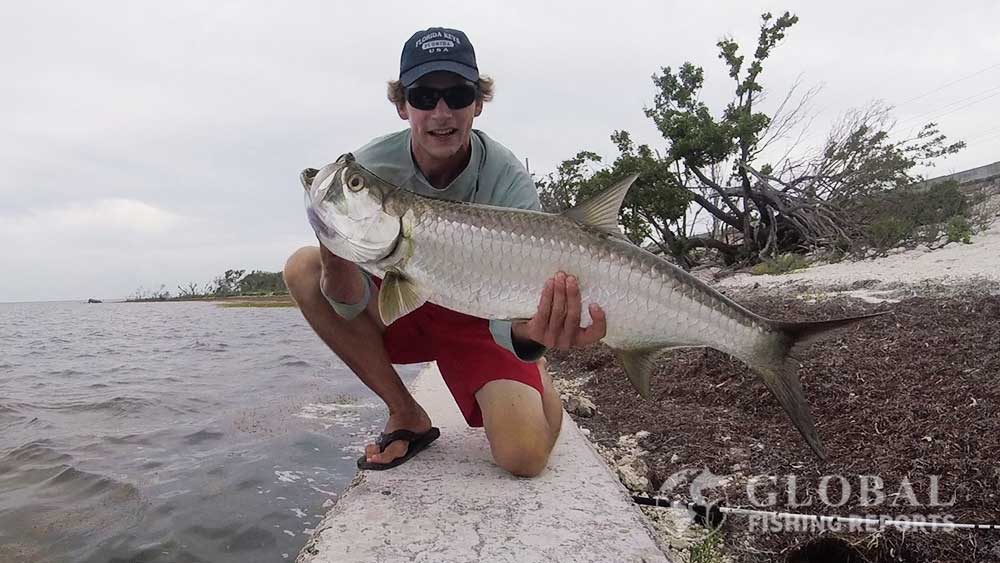
Live Bait: Shrimp
DOA shrimp come is sizes of 3-inch 1/4 ounce and 4-inch 1/2 ounce. Typically I like the four-inch size because it can cast further and sinks faster in strong currents. Shrimp is one of the best baits for fishing in the ocean and these DOA shrimp work well for tarpon. I like the clear red glitter the best but these shrimp baits also come in white, clear, red-white, and glow. Glow is a great option when fishing at night.
Using a bobber to set the depth of the shrimp and then letting the shrimp drift in current is a great way to fish these baits. Live shrimp and gulp alive shrimp work as well. The DOA shrimp is the quickest and easiest way to fish a shrimp bait. The baits also work well to catch tripletail.
Soft Plastic Lure: Hogy (Weightless)
Hogy baits are great for fishing for tarpon in shallow water. This is like using soft plastics when bass fishing. You do not want to spook the fish so you cast beyond the tarpon and slowly bring the bait to the tarpon. With a hogy the lure retrieve speed can be slow and the lure still has good action.
Weightless Hogy Tarpon Lure
Ten-inch rigged weightless black hodgy. This lure has 4X strong hooks that are super-glued in place. The glue helps the hooks stay set in the soft plastic when making forceful casts to get the bait out as far a possible.
This lure is perfect for casting at rolling tarpon at dust and at night. Tarpon can get spooked easily so a natural splash is important. This lure is weightless so it will stay near the surface and not sink like a jig which is important when tarpon are near the surface.
Pink or White Hogy Tarpon Lure
Seven-inch pink or white original hodgy. This is a good bait in clear water on bright days. I like the bait rigged weightless. Jig heads can also be added to the front to make a custom jig. There are offset j-hooks for this bait but I prefer to glue in a 6/0 VMC circle hook to the front of the bait. I would rig it coming out the top so it is more likely to hook in the upper lip of the tarpon.
Super Glue for Tarpon Hooks
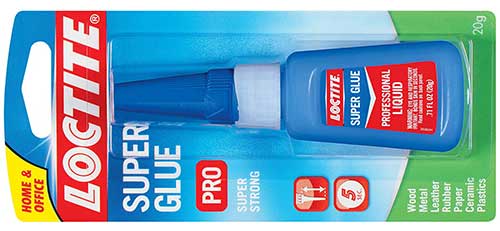
When casting far the hodgy can slip off the hook even if the hook has a keeper. Using super-glue to secure the hook allows for far casting with the bait properly staying on the hook. Place glue on the hook and then insert it into the front of the hogy. Make sure enough hook is exposed so the tarpon will be easily hooked.
Casting Lure: Bomber Badonk-A-Donk
If you prefer casting plugs and covering lots of water the Bomer Badonk-A-Donk is the way to go. Replacing the treble hook with single hooks is a good idea for all tarpon lures. Singe hooks make it safer for the fish and for the fisherman during the release process. Single hooks are also much more likely to get set in the hard moth of a tarpon. If the hook does not get set well the tarpon will shake the hook when it jumps.
Badonk-A-Donk High Pitch Rattle
Bomer Badonk-A-Donk Speckled trout high pitch rattle is a 4-inch 3/4 plug and size 2/0 single hooks would be used if the treble hooks are replaced. The 3-1/2 inch plug is 1/2 ounce and would use size 1 single hooks. The high pitch rattle is good for windy days and murky water.
This is a topwater bait. The lure can be twitched like a popper with a slow retrieve. As the lure is twitched it moves back and forth in a sporadic motion. Hence the name Badonk-A-Donk.
Badonk-A-Donk Low Pitch Rattle
Bomer Badonk-A-Donk Redhead flash high pitch rattle 3 1/2 inch, 1/2 ounce plug with size 1 single hooks if the treble hooks are replaced. The 4-inch plug is 3/4 once and would use size 2/0 single hooks.
The weight of this lure means that it cast far. This is important when tarpon fishing. You do not want the lure to land on the fish. This can spook the entire school of tarpon ar ruins your chances of catching a fish until things settle down again.
VMC InLine Circle Hooks
VMC InLine circle hooks work well as replacements for treble hooks on plugs. Switching treble hooks out for single hooks is a good idea for all large strong fish. With tarpon, this is especially important because when they jump they dislodge any hooks that are not very secured into their mouths.
Split Ring Pliers
Split ring fishing pliers make changing hooks on plugs easier. You can replace hooks without the plies. You can wedge the ring open with a fingernail or thin piece of metal like another fishing hook.
Black Nickel or Silver split rings
Black Nickel or Silver split rings in various sizes. These split rings seem strong for each size compared to other split rings. The black nickel is stronger than the silver but both options should work well. The split rings that come with treble hooks might work but is it better to swap out with new split rings. The lure is only as strong its weakest point and sometimes that is the split rings.
Casting Lure: Chug’N Spook Tarpon Popper
The Chug’N Spook is a 5-inch 1-ounce surface popper. Using a popper when tarpon fishing is a great idea. This is probably the most fun way to catch a tarpon. Many tarpon charter captains will have an oversized popper on the boat to create some splashing and locate fish. This lure is small enough to be fished with stealth and not spook fish. This popper is great at dust and throughout the night. Do not be overly aggressive with the popping and retrieving. Slow twitches and gentle reeling works well. Tarpon are very aware of what is going on and will come to the bait.
The black shiner is another great color pattern for night time although it only comes with the freshwater hooks. It is a good idea to switch these hooks out with VMC inline single hooks just like I showed with the Badonk-A-Donk. This tarpon bait also has a one knocker rattle built-in so the lure can be fished slow and get the attention of the giant fish below. Think of a 5-pound bass hitting a surface popper, now think of a 100-pound tarpon hitting a surface popper. I know this makes me want to go fishing.
Casting Lure: Rapala X-Rap Twitchin’ Mullet
The X-Rap Twitchin’ Mullet is 3-1/8 inches long and weighs 7/16 ounces. This has a very similar appearance to the badonk-a-donk. This difference is this lure is not a surface lure. It is a sinking lure when stationary and typically swims a few feet under the water. The lure has great action even with a slow retrieve speed. What I really like about this lure is that it comes with quality VMC single hooks right out of the box. This makes it one of the best tarpon lures. Most lures these days come with treble hooks that need to be swapped out for single hooks. Treble hooks are legal on artificial bait but single hooks are better for tarpon.

Fly Fishing for Tarpon
In most cases, I think dead mullet will out fish flies for large tarpon. However, catching a tarpon on a fly is more challenging which makes it more fun when it works out. Also, tarpon spook easily, so quietly presenting a small fly can definitely catch fish. Fly fishing for tarpon is all about:
- Location and being able to sight fish
- Stealth in presentation
- Using the right size flies (typically size 1 or 1/0)
- Proper fly patterns for the conditions
- Timing your cast to intercept the tarpon’s path
In many areas in Florida, juvenile tarpon can be caught on flies year-round.
Tarpon Flies
Size 1 or 1/0 tarpon flies including, fox fur tarpon fly which is purple and black, black death which is black and red, half and half which is red and white, marabout tarpon toad which is chartreuse, rabbit strip tarpon toad which is light brown and Denbow’s flip frog gurgler which is black and white. A tackle box to hold the tarpon flies is also included.
Tarpon Jigs
Jigging is particularly effective when tarpon are stacked up deep on bridge pilings or underwater structures. When jigging for tarpon, I consider:
- Using heavier jigs (2-5 ounces) in deeper water and stronger currents
- Opting for lighter jigs (1/4-1 ounce) in shallow water
- Looking for jigs with good action even at slow speeds
- Choosing jigs with fish-attracting rattles when fishing in murky water
- Selecting jig colors based on water clarity and light conditions
Light Jig: DOA TerrorEyz
TerrorEyz 3-inch 1/4 ounce clear jig is the best lure for sight casting at juvenile tarpon. This lure is filed with glitter specs that look great on sunny days and in clear water. This lure is “stuffed with real shrimp”. I am pretty sure the soft plastic is made with some percent shrimp for added scent. The v-shaped body of the lure makes it wiggle back and forth as it moves through the water like a real fish.
Light Jig: Gulp Alive Swimming Mullet
It was a secret for a while that white gulp mullet with a red jig head works great to catch tarpon. A 1/8 ounce jig head with 3-inch mullet catches small tarpon in shallow canals and in the shallow flats. Use a 1/4 ounce jig with 4-inch mullet to catch midsize tarpon. The redhead with a white body is the most popular color combo for tarpon and many other types of saltwater fish. The added scent from the gulp can encourage even cautious tarpon to strike.
Gulp Alive Tarpon Bait
Gulp Alive Swimming Mullet comes in sizes 3 inches, 4 inches, 5 inches, 6 inches, and 7 inches. It comes in color options of pink shine, black, camo, pumpkinseed, chartreuse, glow, peal white, chicken, pink, curried chicken, orange tiger, and salmon red. It typically comes in a 12.8-ounce container with many baits.
Strike King Tarpon Jig
The strike king jig head comes is sizes, 1/8 ounce, 1/4 ounce, 3/8 ounce, and 1/2 ounce. The jig comes in colors of red, pearl, clear coated, and chartreuse. This jig is designed for saltwater and has reflective 3-D eyes. The jig has bait keeper barbs which work well to hold the Gulp baits in place. Bass Pros Shops offers a similar style jig-head.
If you have ever use gulp you probably know that it can be amazing. I first found out about gulp fishing for fluke in New Jersey. The white and chartreuse gulp would out fish dead minnow 5 to 1 and even outfish live minnows. In the north Jersey area gulp quickly became the most widely used bait. In the clear waters of Florida gulp works well but gulp excels when the water is green or stained. That is when a strong scent from gulp offers a big advantage.
Medium Weight Jig: DOA Bait Buster
Four-inch 5/8 ounce bait buster. It comes in red-white or black-white bunker color. This is a versatile lure that can be cast and retrieved in shallow water or jigged in deep water. The hollow body allows for better hookups. The hook coming out the top also allows for a hookset in the top lip of tarpon which is a commonplace to hook a tarpon. The tail of this bait flutters even at slow retrieve speeds giving it great action.
Medium Weight Jig: DOA Swimming Mullet Tarpon Jig
DOA 1-1/4 ounce Swimming Mullet Jig. Good for tarpon jigging in mid-depth water. This is a medium weight jig with a soft and squishy body. The body is actually hollow to allow for a better hook set. This jig is a bit too heavy to be cast and retrieved in shallow water. This is a good lure to jig in water less than 60 feet in light currents. The big red eye on this bait really stands out and the overall appearance of this bait is similar to a finger mullet which is a tarpons favorite food.
Heavy Jigs: Hogy Protail
Hogy Protail Tarpon Jig
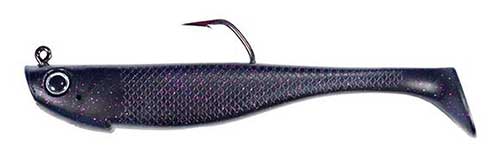
The protail paddle is a great swimbait for tarpon. This jig is 6.5-inches long and weighs 2-6 ounces. This is a great jig for dark conditions and murky water. Typically you are fishing for tarpon in dark conditions and that is why this is an especially good jig for tarpon. The jig is made of soft plastic but it is stiffer than most swim jigs. The VMC Barbarian jig hook is strong and thin which is great for going through the hard mouths of tarpon. This jig also comes in silver and white which is better for sunny days and clear water.
Hogy Protail Eel Tarpon Jig

This protail eel jig is 9-inches long and weighs 4 ounces. Good for when tarpon are stacked up deep on a bridge piling or underwater structure. Eel baits are a popular style for tarpon fishing. The heavyweight and slender profile of this jig allow it to get deep even in strong currents. This allows the bait to jigged in the changing currents around bridge pilings which are common places for tarpon to hangout.

Heavy Jig: Al Gags Green Mackerel Tarpon Jig

Al Gags Whip 6-inch 5-ounce tarpon jig, green mackerel color pattern. This jig is most similar to the breakaway tarpon jigs that were used for years at Boca Grande pass in Florida. The most popular tarpon jig for Boca grand pass is shown below. It had an advantage to this jig because the weight would break away which made it much less likely that the fish will throw the hook when it jumps. This jig has a fish-attracting rattle within the head.
Breakaway Tarpon Jig
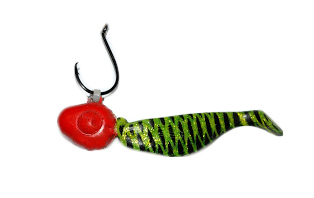
The Cotee live eye action bait tarpon jig was a very popular jig to use at the Boca Grande Pass in Florida. This was a breakaway jig with a 4-6 once-weighted head. I remember seeing piles of charter boats with most anglers having these jigs on their poles. Now, these breakaway jigs with the hook above an artificial lure are illegal to use in Florida because some people say they snag fish rather than catch fish. This was a very controversial topic because many charter operators make a living running tarpon charters in the Boca Grande area. There are also many competitive tarpon tournaments throughout the season.
The traditional way to tarpon fish in the Boca Grande Pass is to use live bait with a long 100-pound leader about 10 feet in length with a barrel swivel between the leader and the mainline. A 6-8 ounce weight would be connected to the swivel and twisted around the line with copper wire. When fighting the tarpon the weight would break off the rig.
Studies done by the Florida Fish and Wildlife Conservation Commission showed there was no difference in mortality rates between fish caught with artificial jigs compared to live bait. Catch and release mortality rates were between 9.8 percent visually confirmed and 19.5 percent based on directional hydrophone tracked and tagged fish data. This study was specifically done for the Boca Grand Pass area and shark attacks were the main reason for tarpon death. There was more foul hooked tarpon on artificial baits compared to live baits but not an unusually high percentage when comparing artificial baits to live baits in other fish species.
Light Jigs: Goture Tarpon Jigs
These jigs are 4-inches long and weigh .77 ounces. There are five great color options. The grey works best at night and in murky water. The luminous works great at night as well. The red and white works best on sunny days and in clear water. The glitter in the gold and blue make these bait stand out compared to other swim jig baits. The bodies of these jigs are made of soft PVC and the tail has great action during a slow retrieve or in the current.
Tarpon Behavior and Fishing Tips
Why Do Tarpon Roll?
Tarpon roll to breathe when oxygen captured from their gills is not enough. Tarpon are frequently seen rolling on the top of the water and are often mistaken for sharks. This is generally during slack tide when the water is stale and has less oxygen. The tarpon trap air by opening their mouths when they roll. The air goes to the swim bladder where it can be absorbed in the alveolar. The alveolar has lung-like tissue and can absorb oxygen from the air. This is why fishing during a slack tide can help you spot tarpon. A slack tide in the evening is my favorite time to fish for tarpon.
Are Tarpon Legal to Keep?
In the United States, tarpon are catch and release only with one exception. If you purchase a tarpon tag in advance you are allowed to keep one tarpon per year if it is a contender for an IGFA record. The Florida state record is 243 pounds and was caught in 1975. The world record tarpon was caught in 2003 at Rubane, Guinea-Bissau, Africa and weighed in at over 286 pounds, and was about 7 feet in length.
Tarpon can live for over 50 years. A 100-pound tarpon is about 15 years old. Tarpon as a sportfish provides a much bigger market than the food quality of a tarpon. You can eat tarpon if it is life or death but the taste is terrible and it is against the law in the United States.
Why Is It Illegal to Take a Tarpon Out of the Water?
In Florida, it is illegal to take a tarpon that is over 40-inches in length out of the water. The main reason is most people would kill the fish during the picture-taking process. Tarpon only have two places to grab, the mouth and the gill plate. Grabbing a tarpon by the mouth even with gloves will likely result in the fish slipping onto the ground. If you keep your hand right along the gill plate you can lift the fish without grabbing the gills of the tarpon. However, it is difficult to get proper hand placement with the fish on the side of the boat or near shore.
It is tempting to take a picture with the huge fish but only do so with the fish in the water and get videos of the fight to share. If you post photos online holding a huge tarpon people are going to call you out. Releasing a tarpon that is tired might result in it getting eaten by a shark. If a person really wants that photo with a tarpon the solution is to jump in the murky water with the tarpon. I strongly recommend against getting in the water with a tarpon for a photo. The commotion of fighting a tarpon frequently attracts large sharks.
What Is the Best Time of Year to Catch Tarpon?
In Florida from Tampa to the Florida Keys, the big migratory tarpon season is best during the months of May and June. It is good fishing in April and July but it is less consistent. Tarpon start coming in large numbers once the temperature of the water is above 75 degrees. Once large numbers of mullet are in the flats and canals the tarpon will not be far behind. There are resident tarpon that can be caught year-round so always be on the lookout for tarpon.
Landing and Handling Tarpon
When you hook a tarpon, remember these important tips:
- Do not set the hook when using circle hooks – simply close the bail and start reeling until the line gets tight
- Be prepared for the tarpon to peel drag and likely jump within the first 20 seconds
- Always bow to the tarpon (give slack) when it jumps
- The fish will tire itself out within 5-10 minutes, then you can increase drag to bring it to the boat
- Keep the fish in the water for photos if it’s over 40 inches
- For smaller tarpon, lift them directly out of the water and take a quick picture with the fish out of the water for less than 15 seconds
- Remember that tarpon fight until they’re exhausted, so they don’t survive long out of water
Always remember, whatever bait is being used, to bow to the tarpon and give the fish slack while it is jumping. If slack is not given, it is very likely that it will throw the hook and get away. By following these guidelines and using the right techniques, baits, and lures, you will greatly improve your chances of landing these magnificent gamefish. Good luck on your next tarpon fishing adventure!
Captain Cody has worked on charter fishing boats in the Florida Keys, Virgin Islands, and Alaska. Growing up in Pennsylvania Cody has also done extensive freshwater fishing including bass fishing tournaments. Cody strives to provide detailed information about the best fishing gear and tactics to help both novice and experienced anglers have a more productive and enjoyable time on the water. Cody also has a background in aerospace engineering and neuroscience but really only takes pride in being good at one thing and that is fishing!

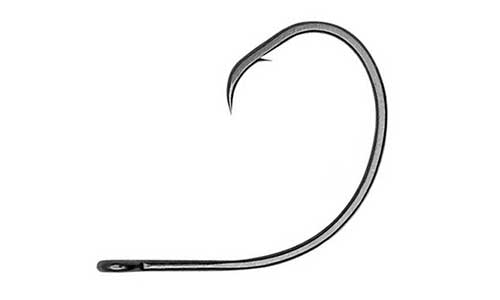
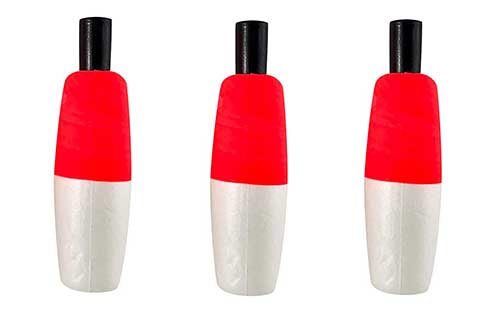

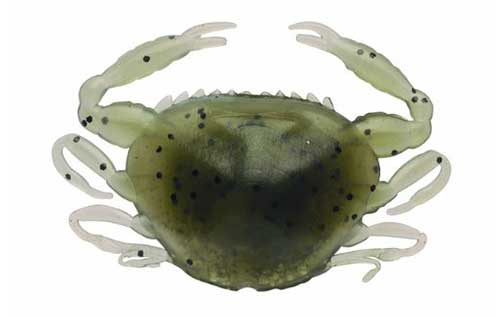
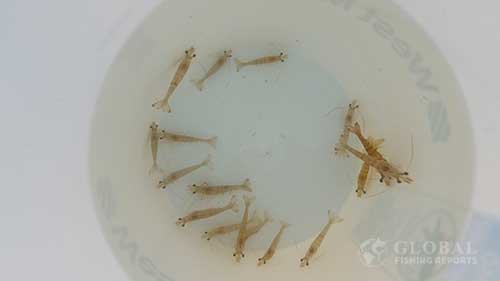


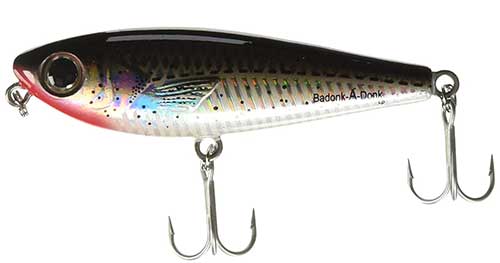
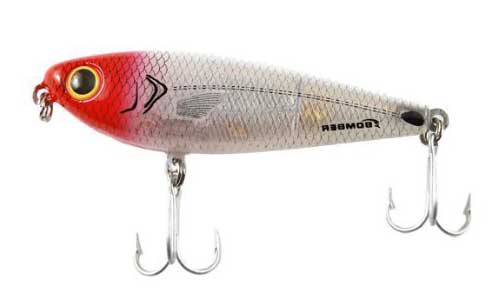




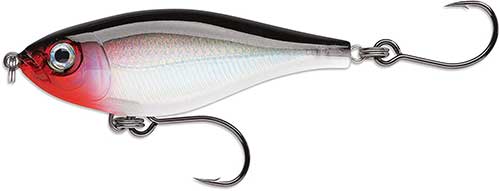
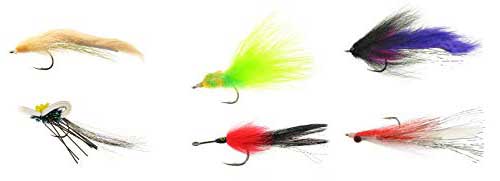
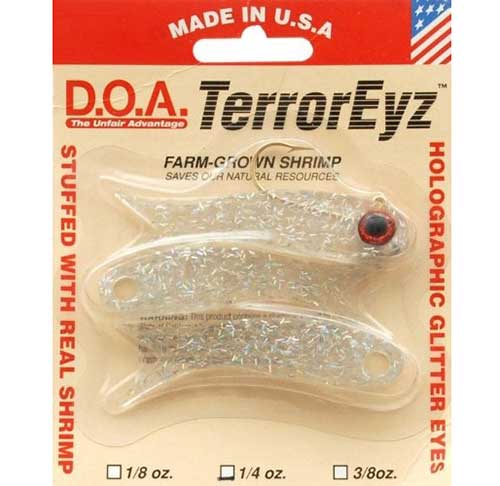
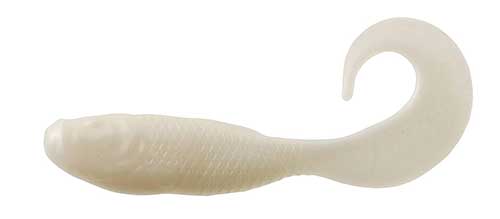



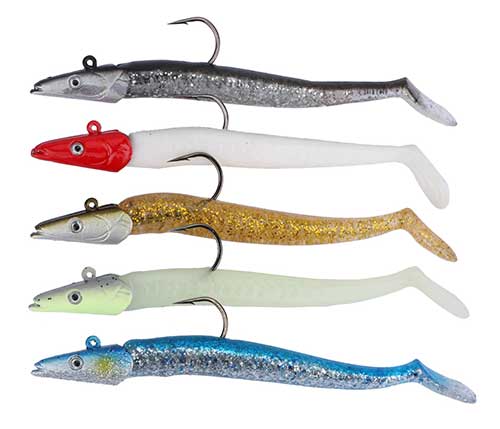
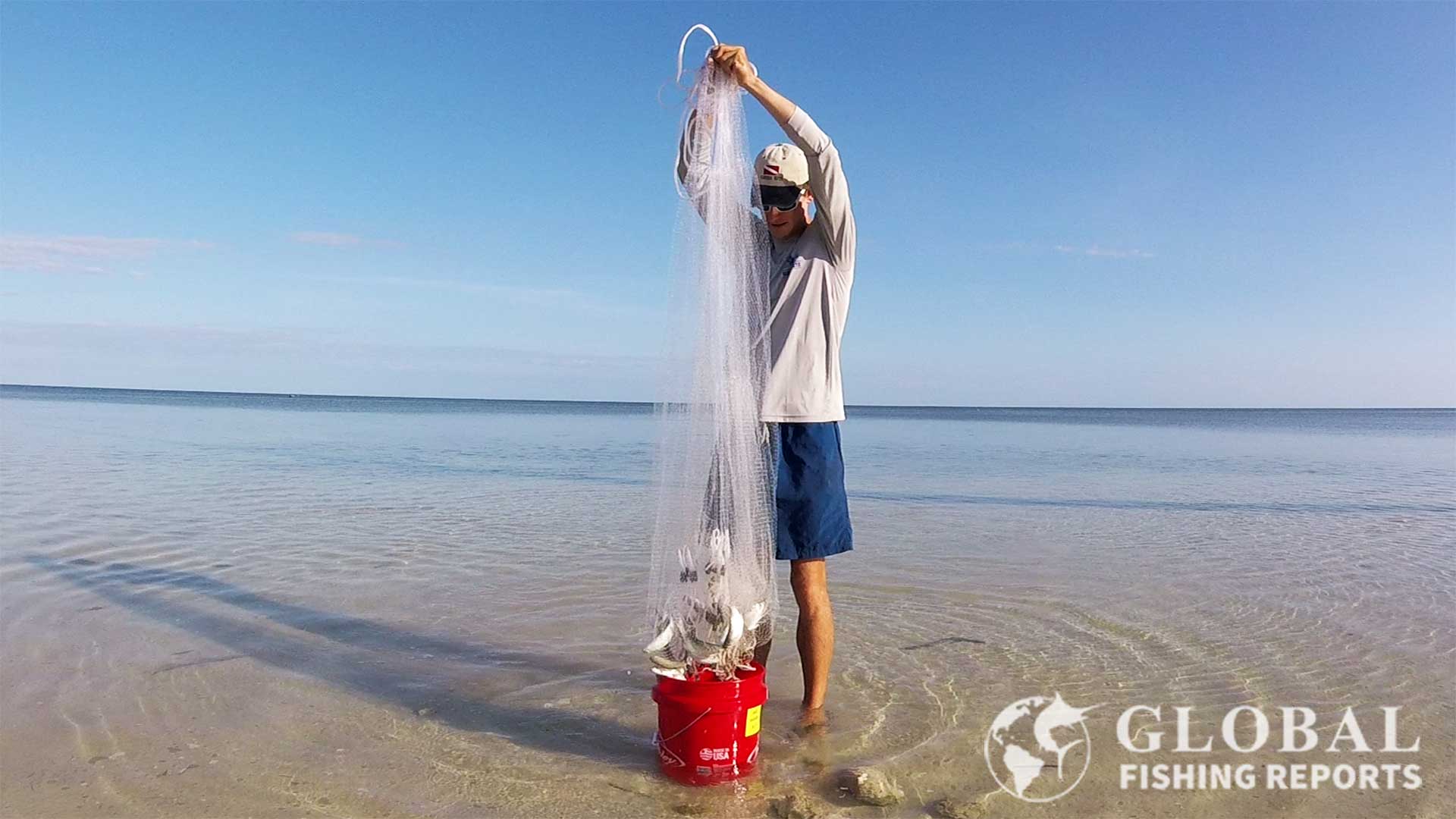
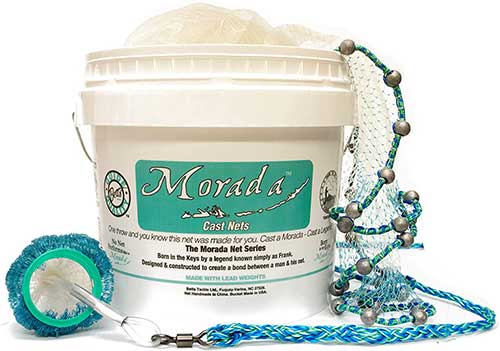


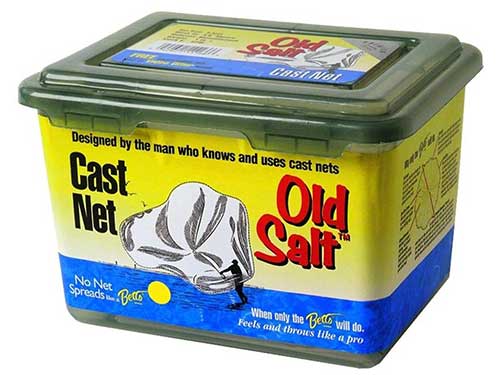
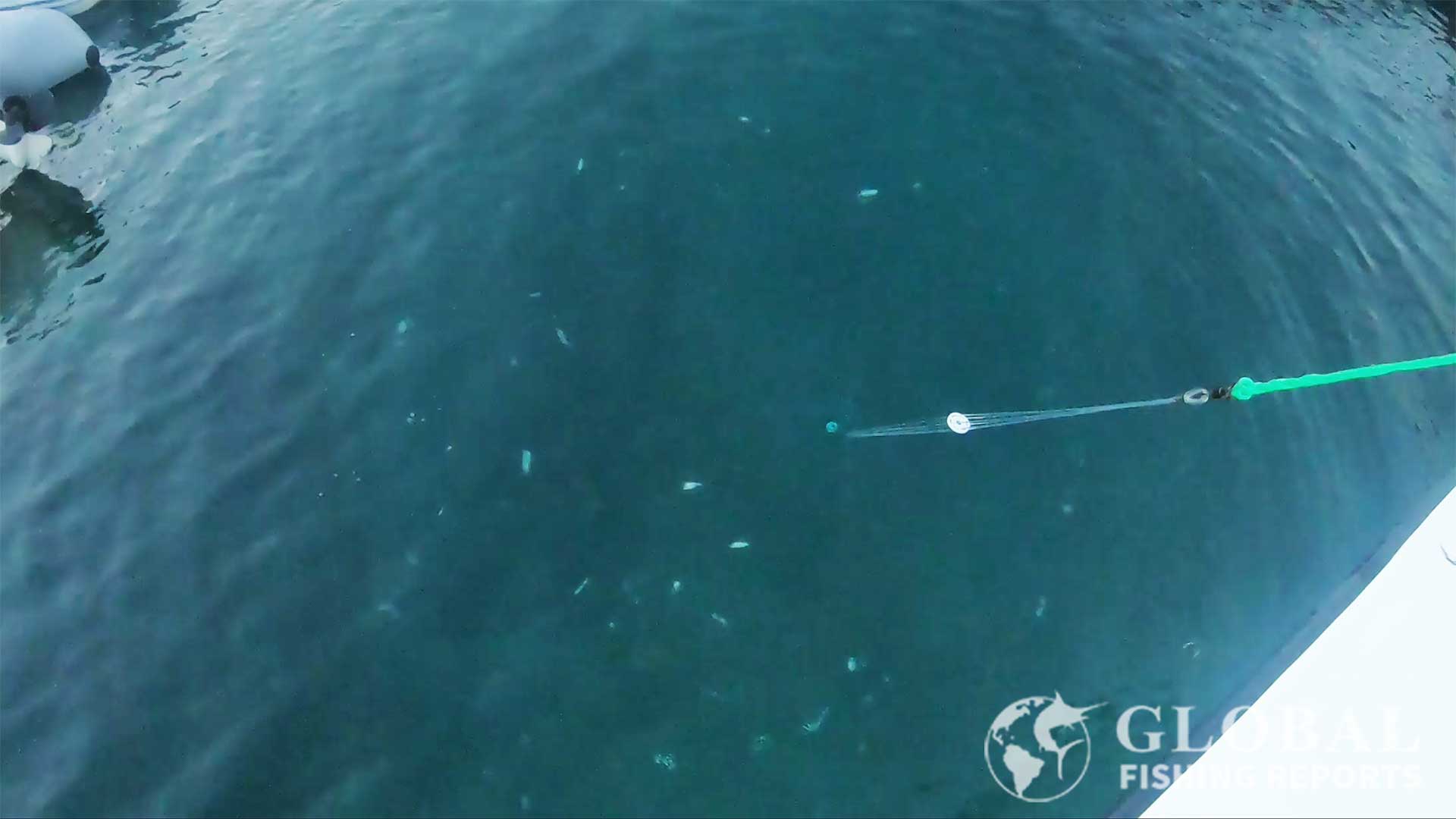
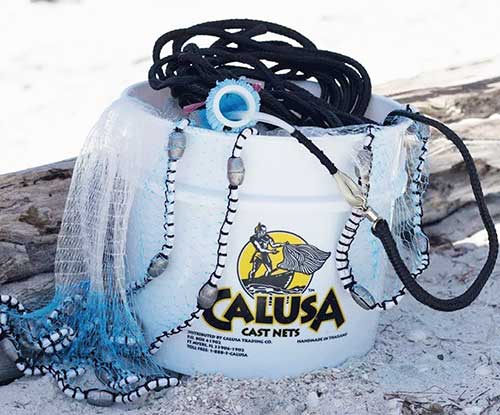
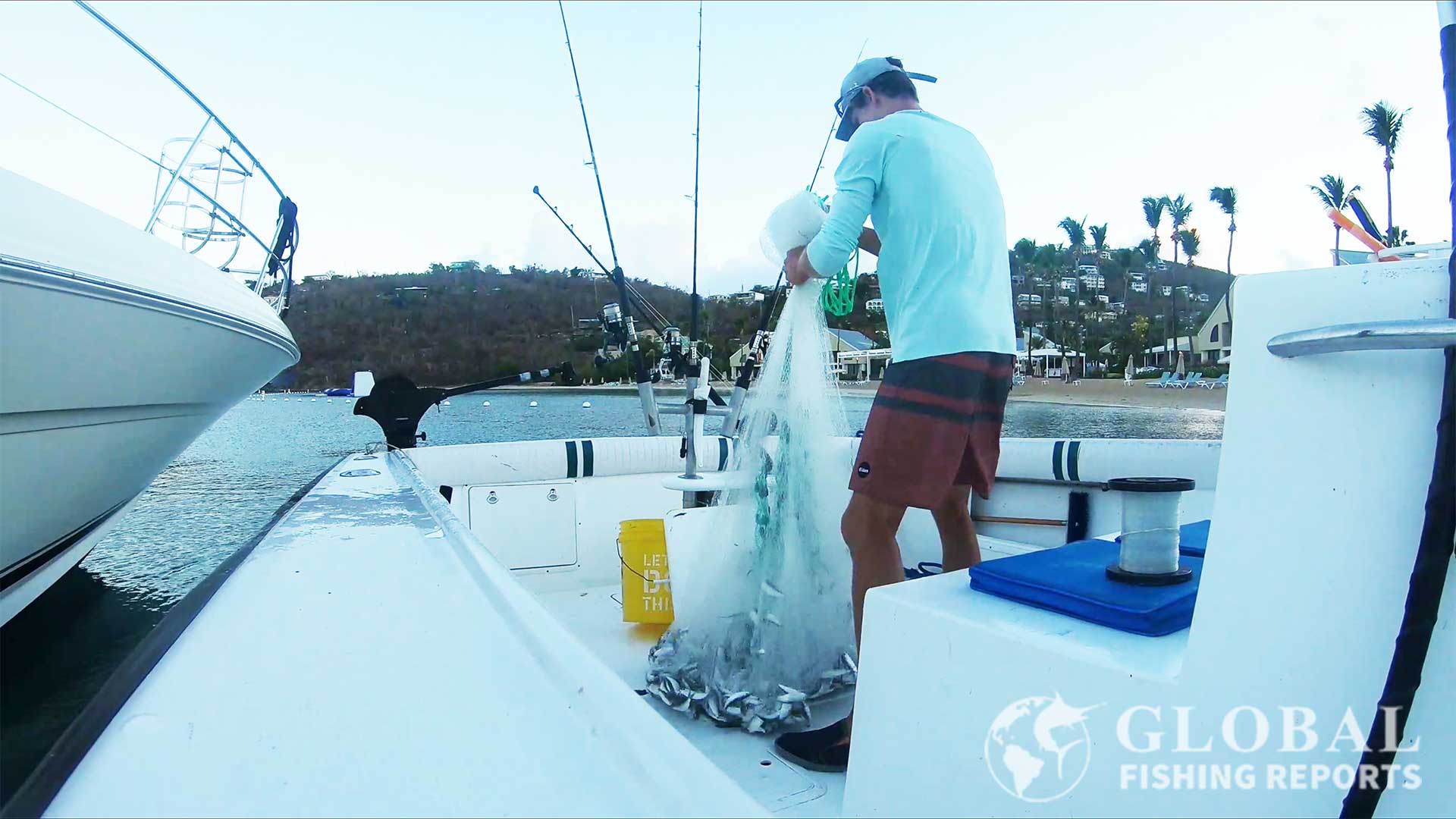
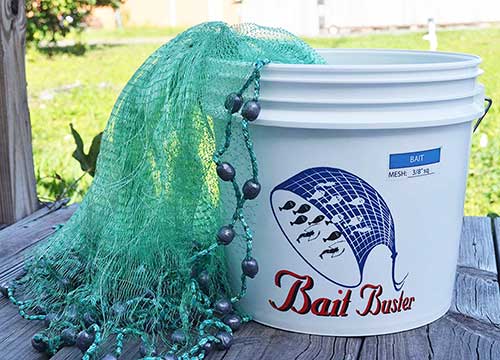
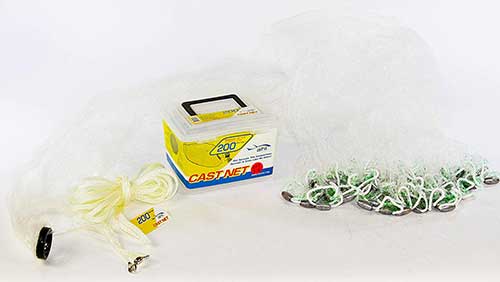
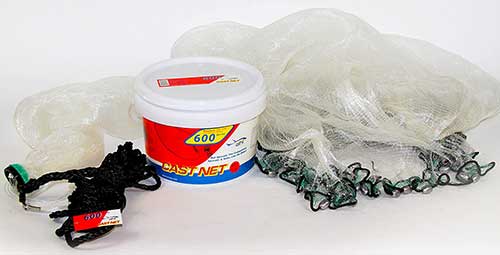
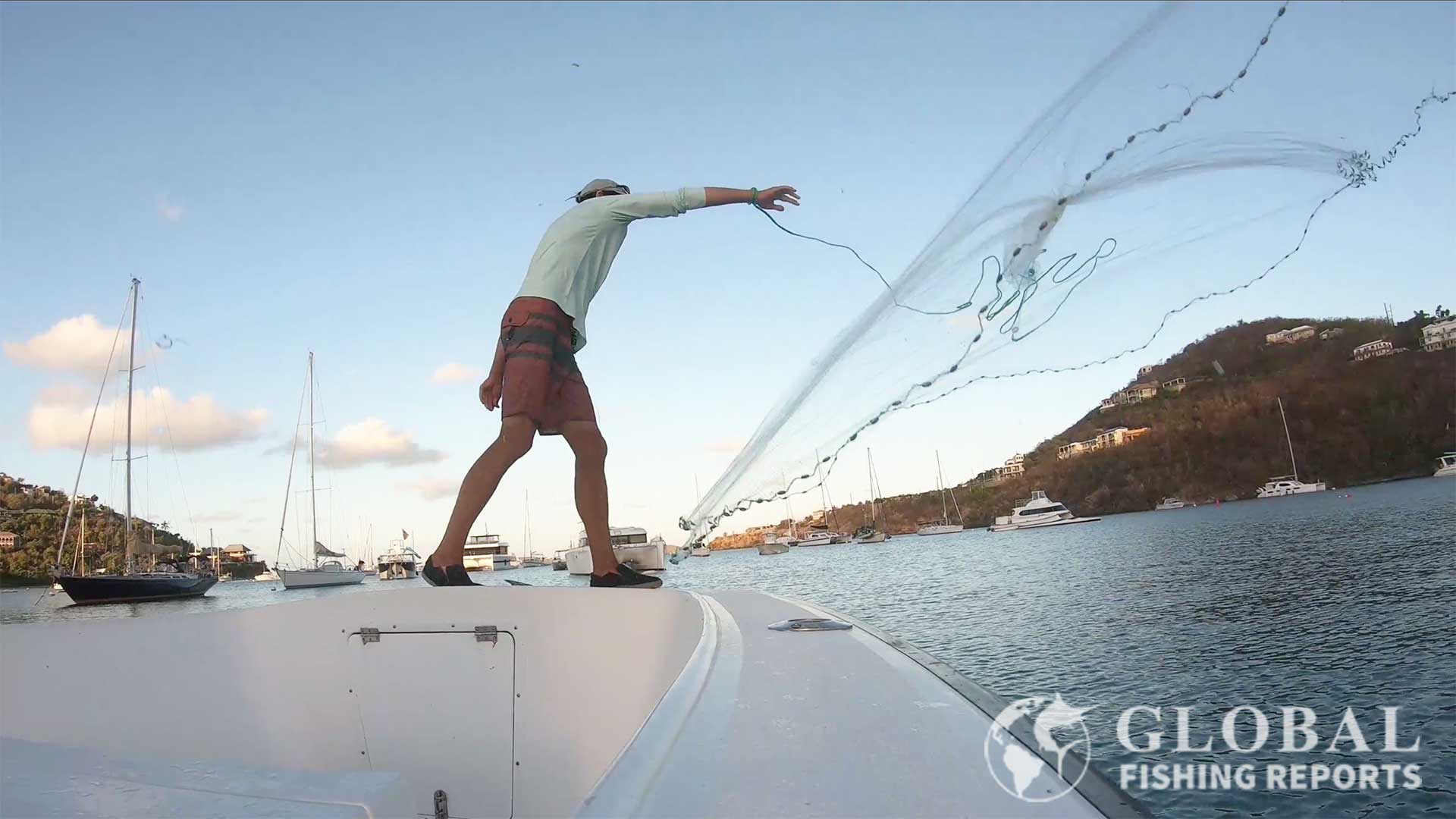 I am throwing a 12-foot cast net in the USVI.
I am throwing a 12-foot cast net in the USVI.
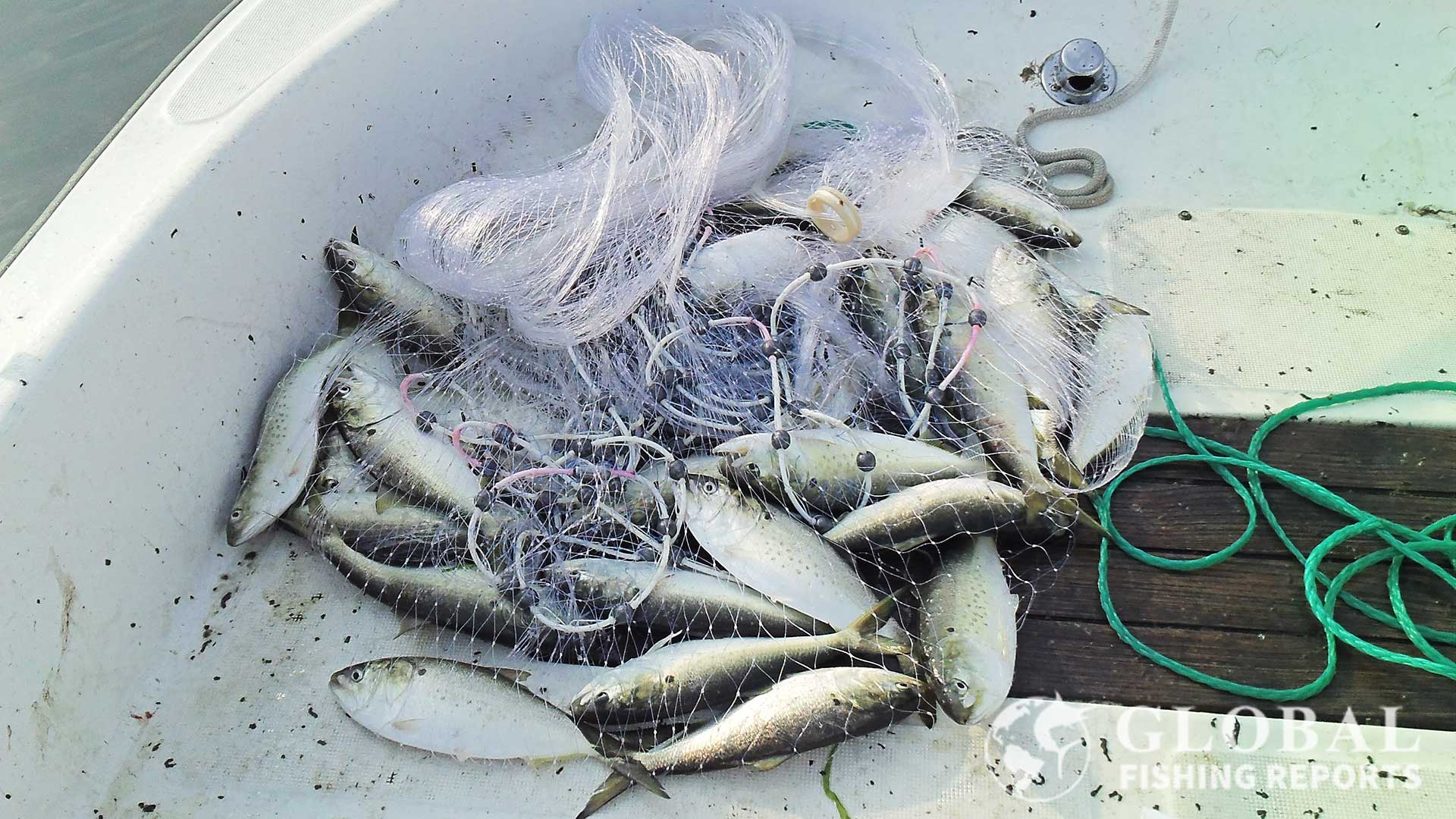
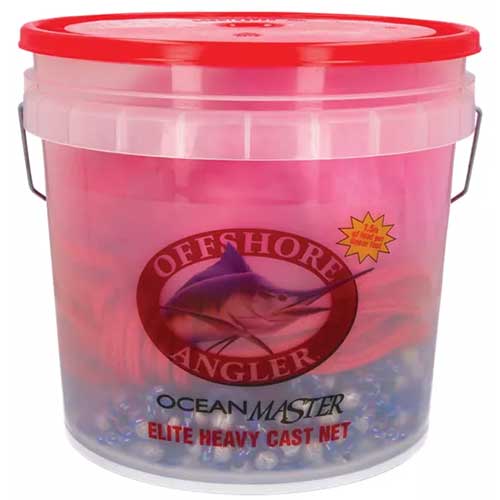
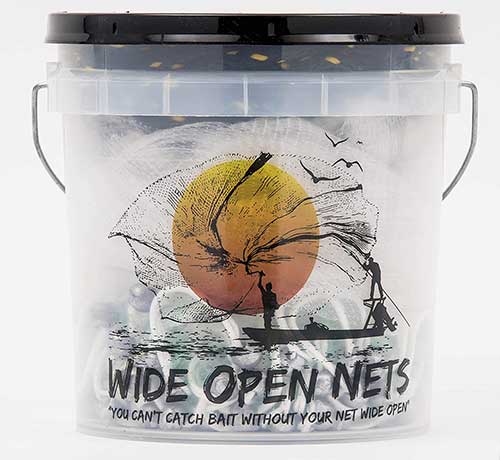
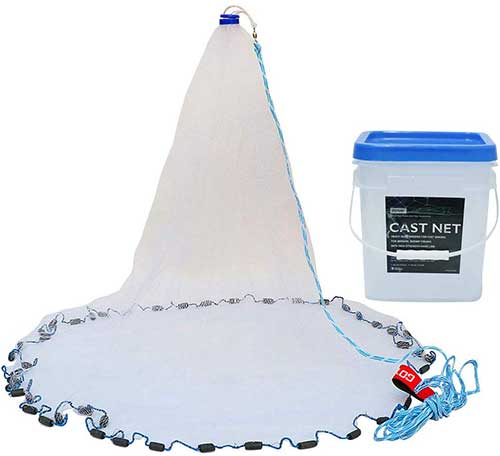
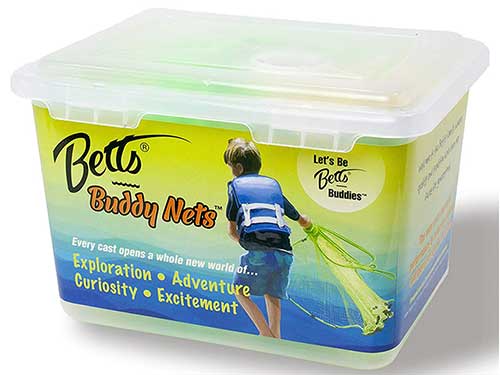
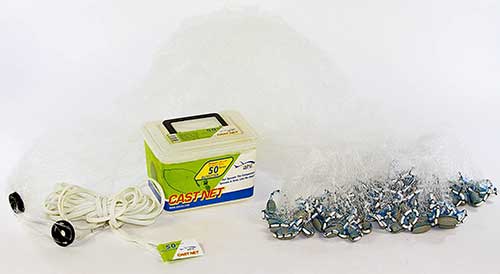
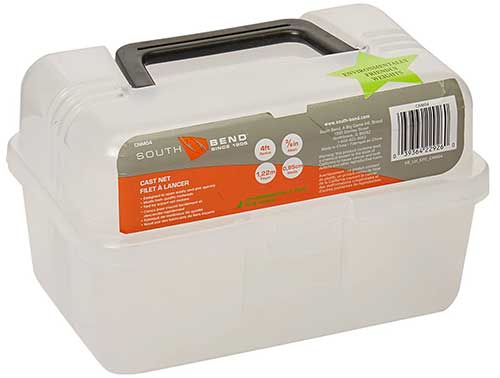
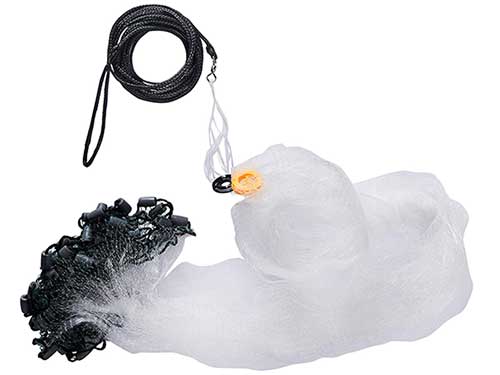
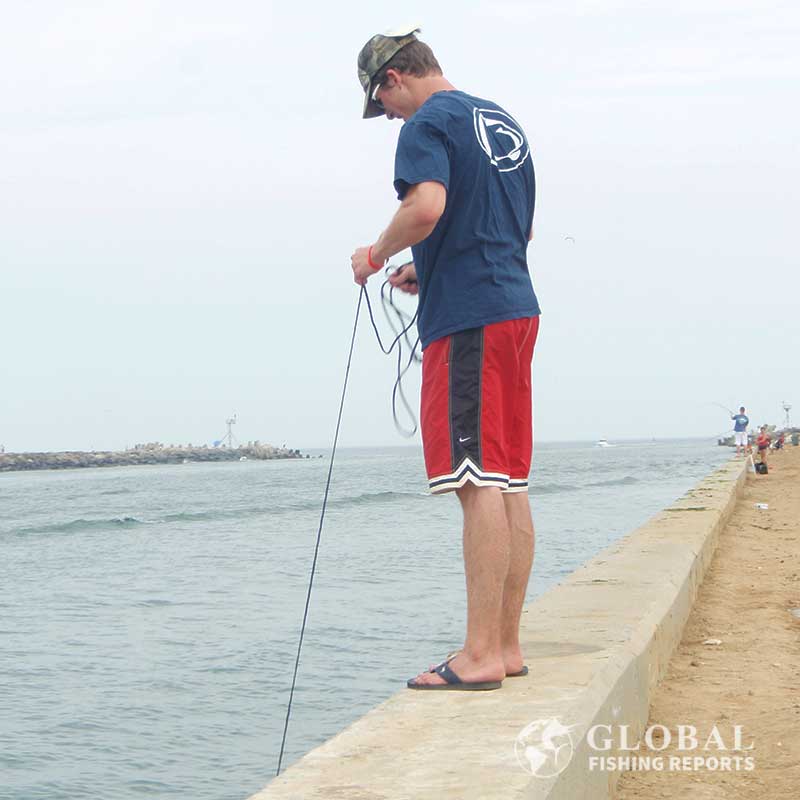
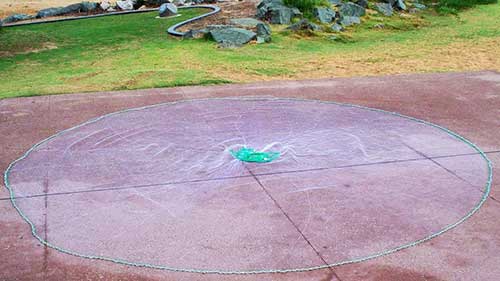
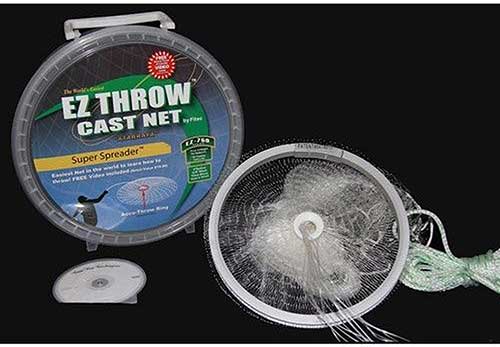
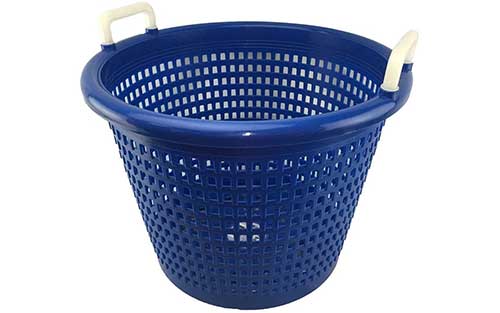

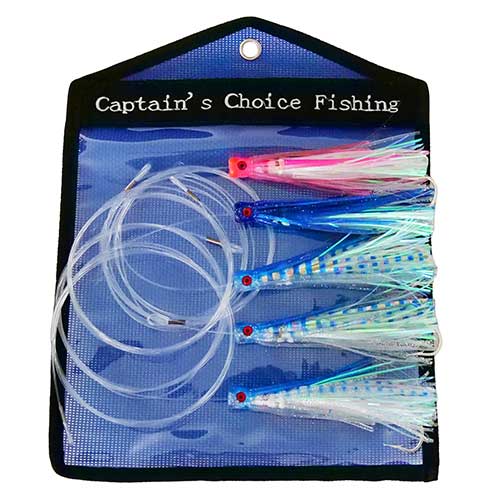
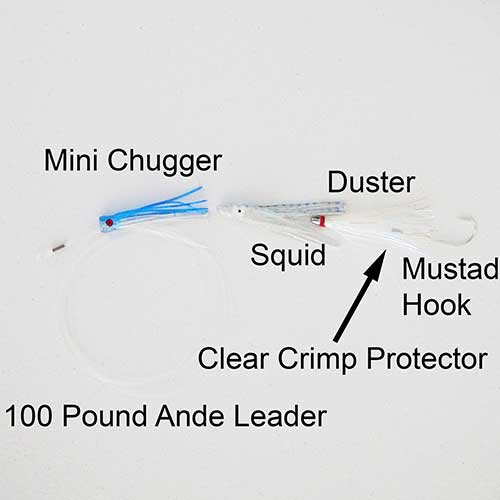
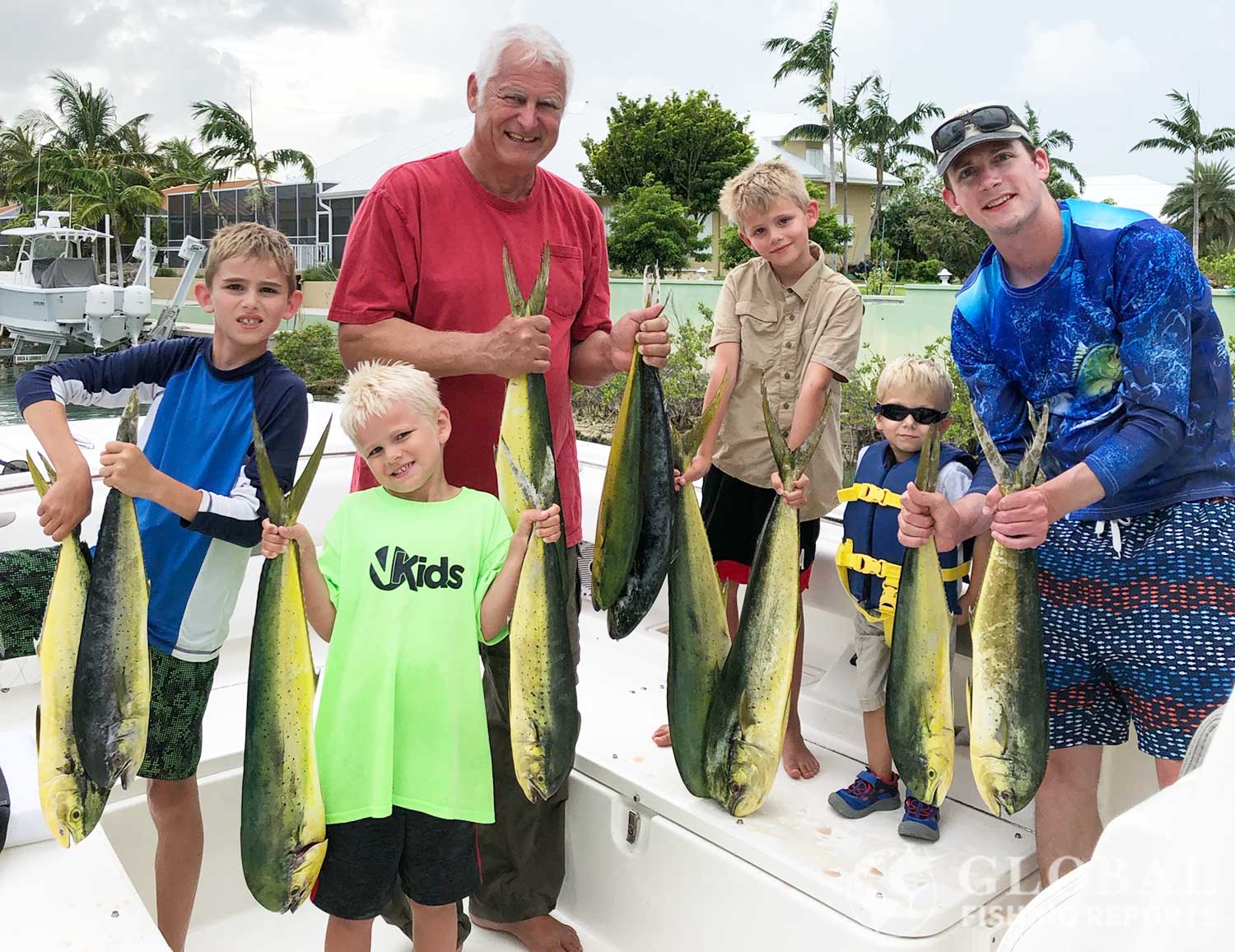
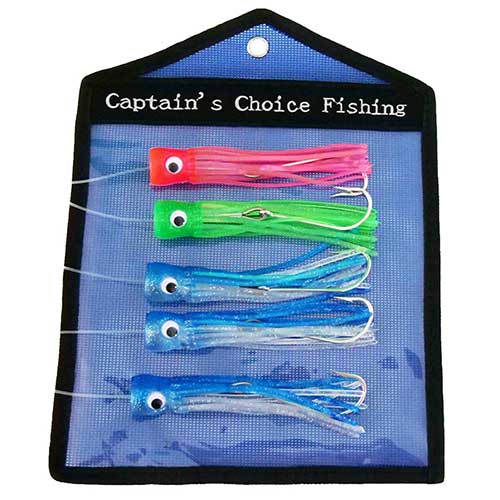
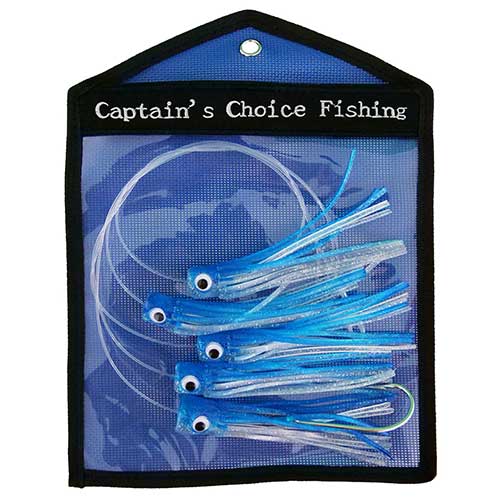

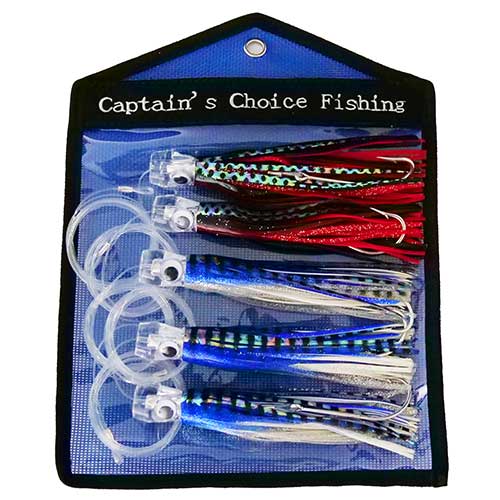
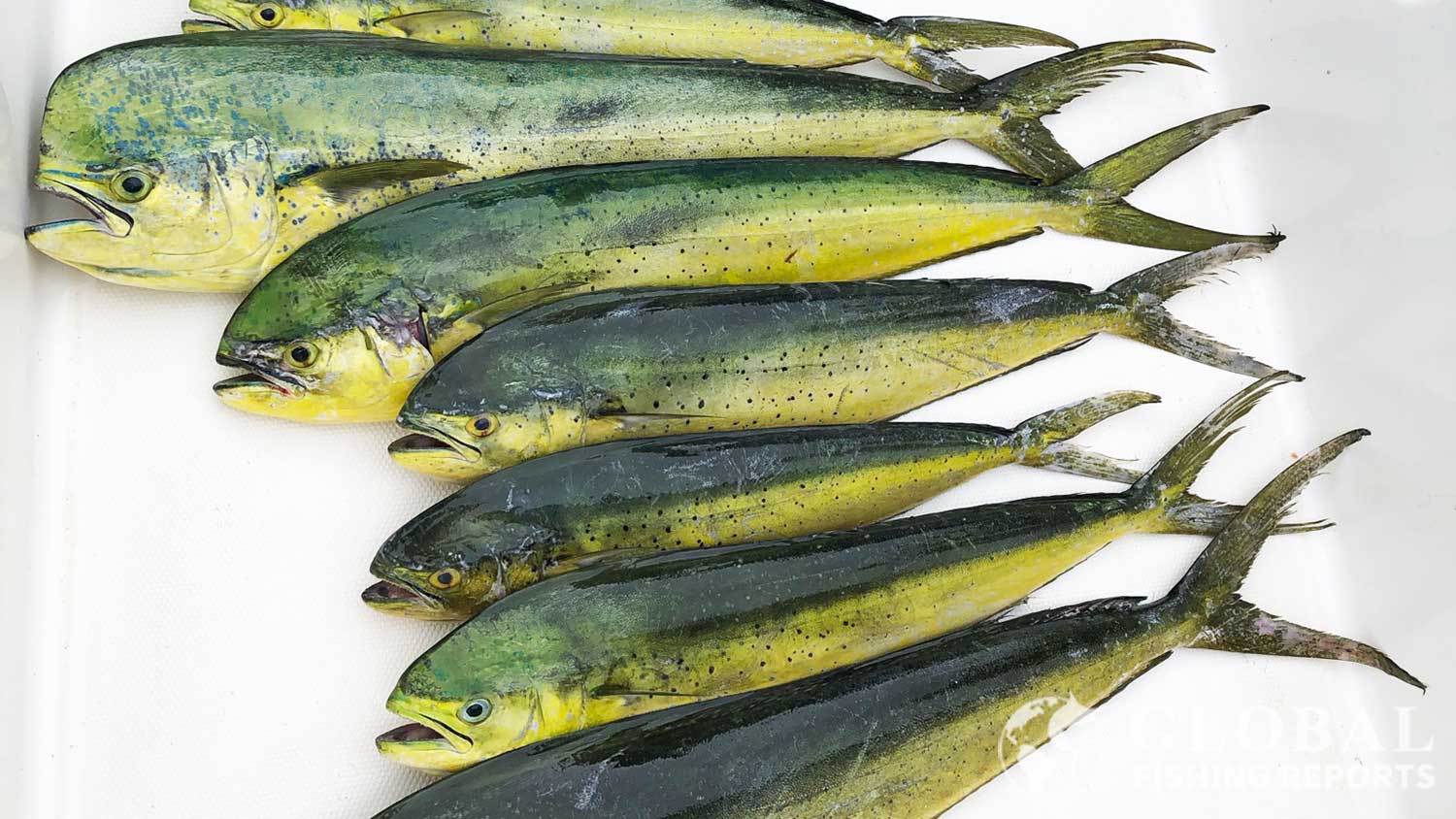
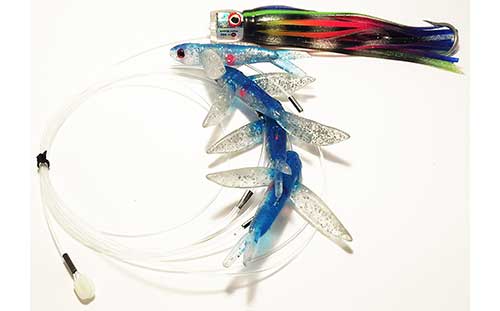

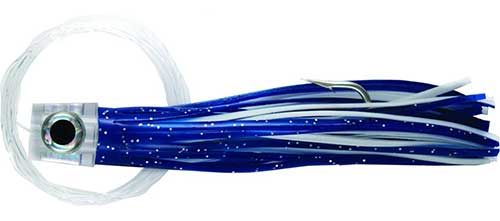
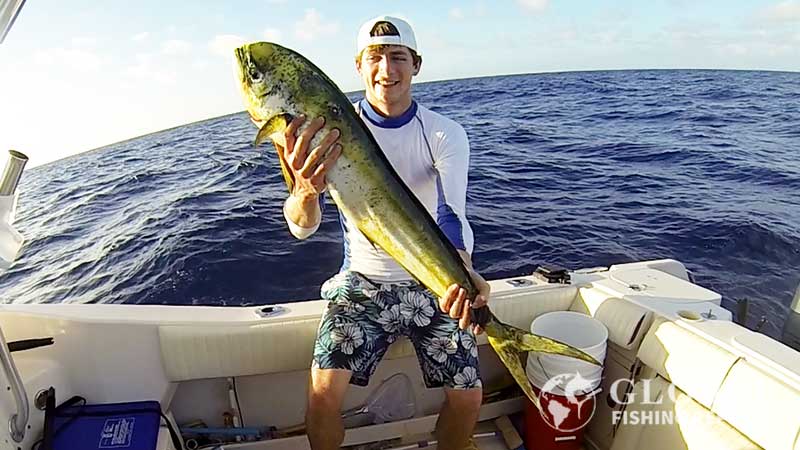
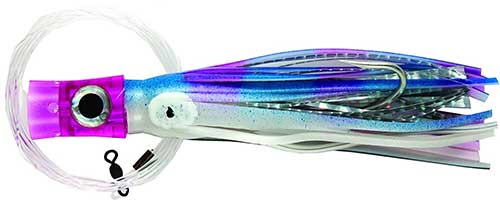
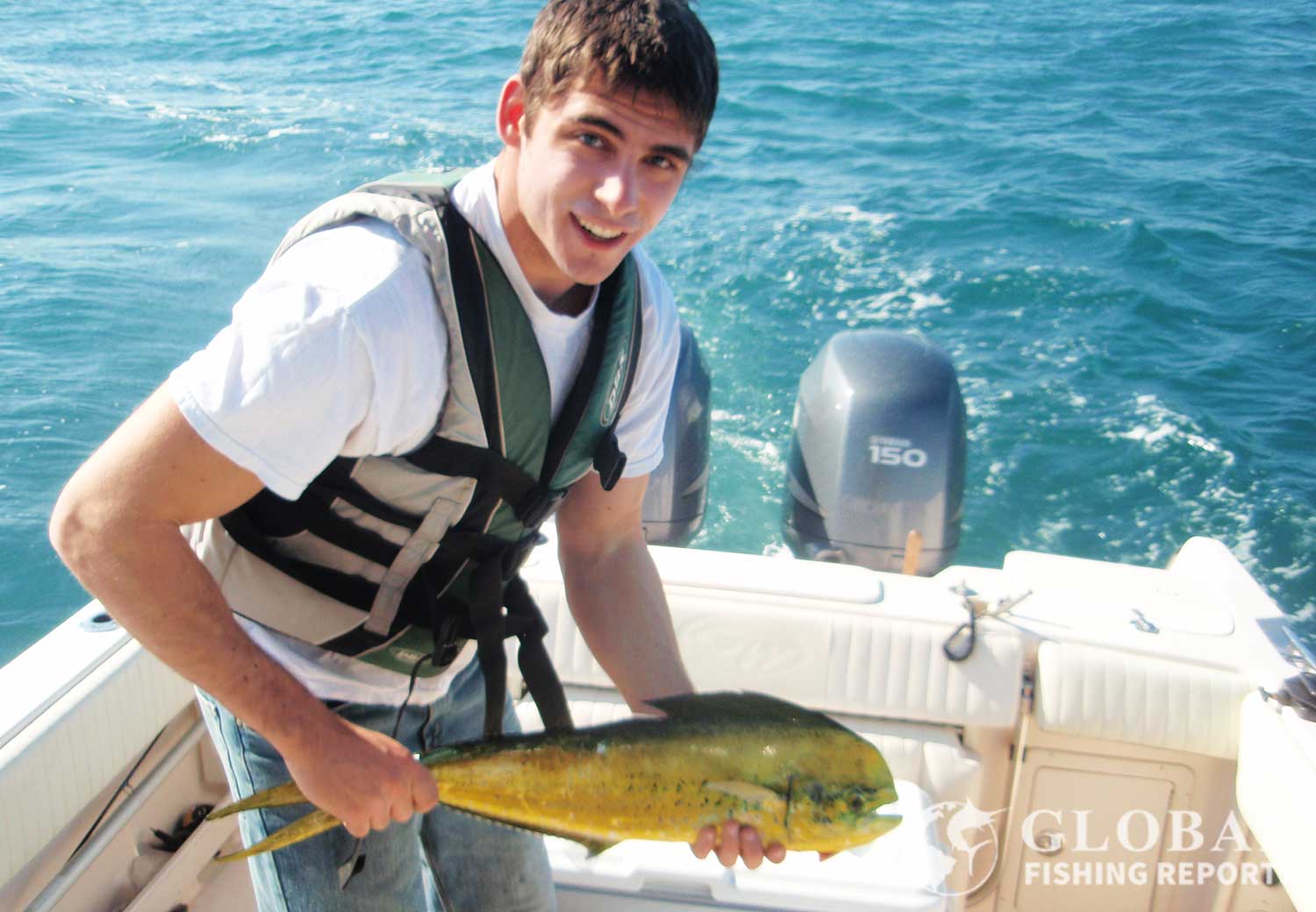
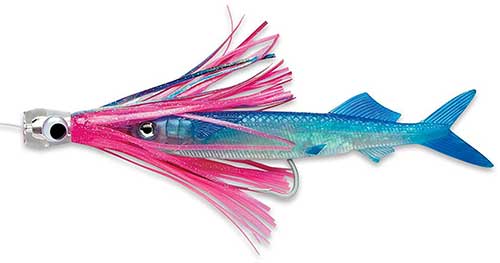
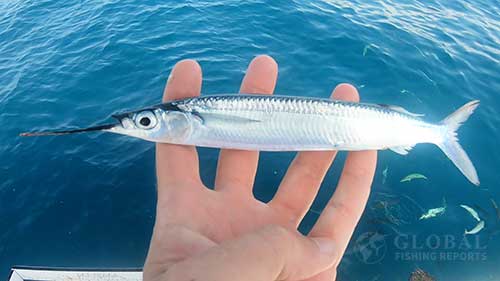

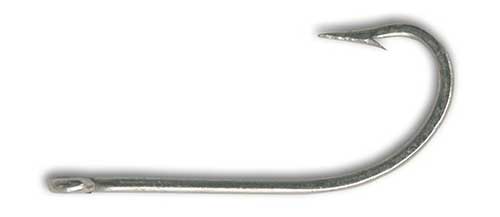

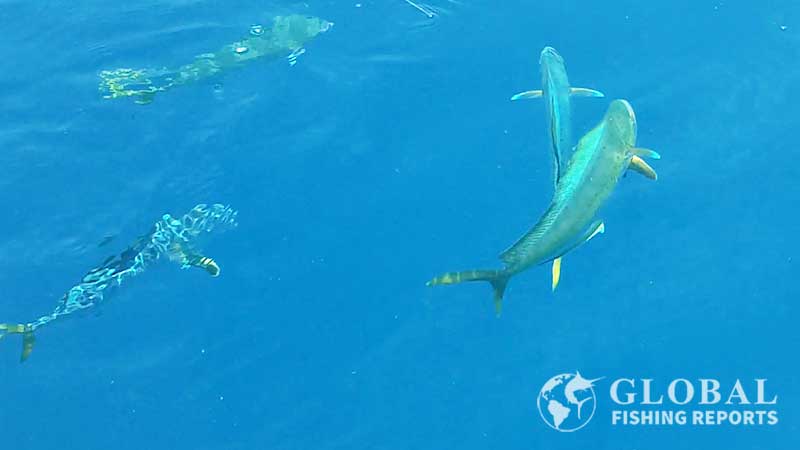
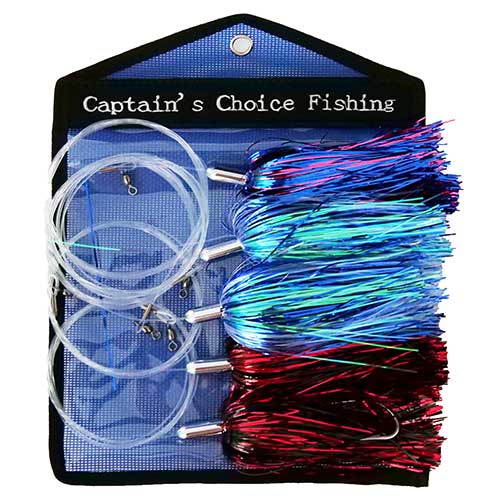

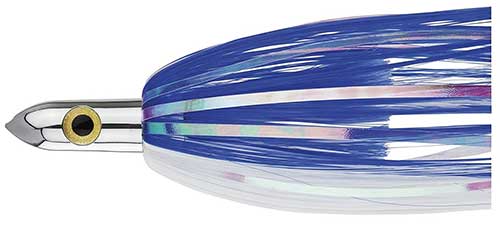
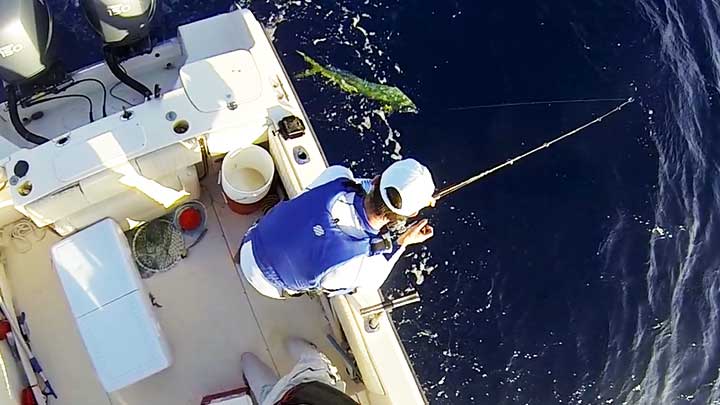
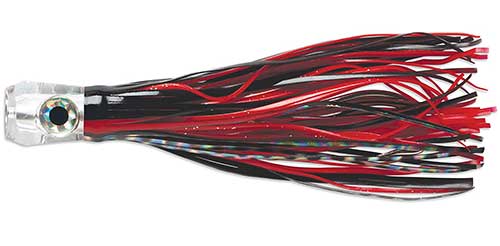
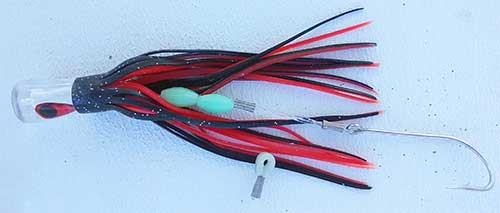
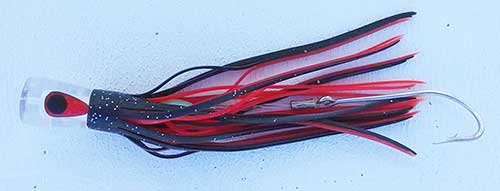
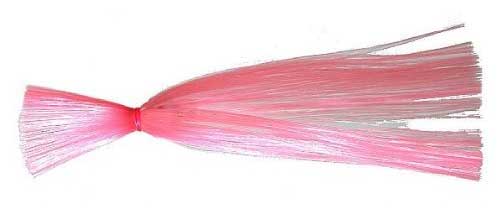
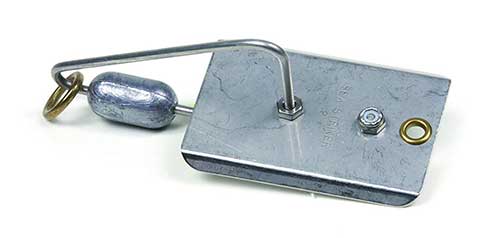



Evan, I fish year-round in the St Pete Beach area. I’d strongly recommend BKD lures with varying jig weights depending on current and large mirrolure twitch baits. I’d have one set up ready with a large topwater as well. If they start frenzy feeding on the surface you want to be ready. Best topwater action of your life.
Going to be surf fishing at St Pete Beach end of June. What should I be throwing for tarpon from the beach? Taking 10-foot airwave with Penn battle 5000 for lures and 11-foot Okuma Cedros with Azores 650 for throwing bait.
Evan, those are nice setups. For bait, I would recommend any fresh dead bait, mullet, pinfish, pilchards, etc. For lures, any of the above ones should work, jigs, poppers, crankbaits. I would focus on bait until you catch a few though as I find it is the most productive. Good luck!